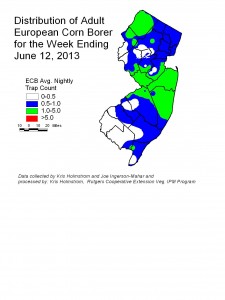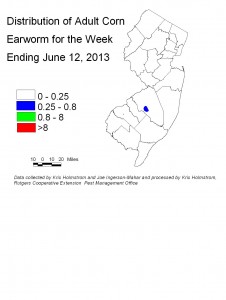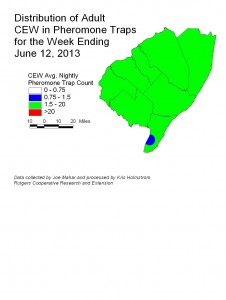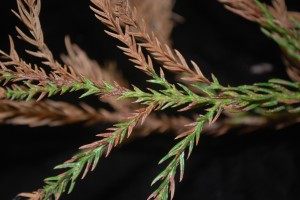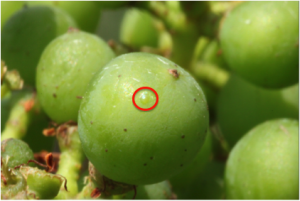Basil downy mildew has been reported in South Jersey near Vineland. This is the first report of basil downy mildew this season in New Jersey and the mid-Atlantic region. All basil growers are urged to scout their fields and consider applying preventative fungicides. The wet weather over the past week and the rains expected to come through the area later today and this later week are ideal for the development and spread of basil downy mildew.
Archives for June 2013
Veg IPM Update: Week Ending 6/12/13
Vegetable IPM Report 6-12-13 – Click to View | Download | Print
In this report:
- Sweet Corn
- Cole Crops
- Tomatoes
- Peppers
- Brown Marmorated Stinkbug
Devrinol Gets New Packaging and an Improvement
The new Devrinol formulation, Devrinol DF-XT, is still a fifty percent dry flowable formulation, but includes UV (ultraviolet light) protection, so the product is no longer broken down on the soil surface by sunlight. [Read more…]
Maskelled Bandit
If you don’t pay attention, the Maskell bandit will steal the health of your conifers. Maskell scales, Lepidosaphes pallida, will cause needle browning and branch dieback on Cryptomeria, Sciadopitys, and Pinus thunbergiana. Heavy infestations can cause tree death.
Fruit IPM Report: Week Ending 6/11/13
Fruit IPM Report 6-11-13 – Click to View | Download | Print
In this report:
- Peach
- Apple
- Pear
- Wine Grape
- Scouting Calendar
- Blueberry
- Trap Counts
Potato Disease Forecasting Report 6-11-13
Potato Disease Forecasting Report 6-11-13 – Click to Download
We will be tracking DSVs for Late blight development and calculating P-days for initiating the first early blight fungicide application.
The first late blight fungicide application is recommended once 18 DSVs accumulate from green row. Green row typically occurs around the first week in May in southern New Jersey. An early season application of a protectant fungicide such as mancozeb (Dithane, Manzate, Penncozeb) or Bravo (chlorothalonil) as soon the field is accessible is suggested. Please be vigilant and keep a look out for suspect late blight infections on young plants. No late blight has been reported in our region to date.
Remember the threshold for P-days is 300! Once 300 P-days is reached for your location early blight fungicide applications should be initiated. Growers who are interested in using this model should chose the location above that is closest in proximity to their farming operation and should regularly check the Cornell NEWA website (http://newa.cornell.edu/) where this information is compiled from. Click on Pests Forecasts from the menu, select your weather station, and click on tomato diseases, set accumulation start date and a table of daily and total DSVs will be generated.
